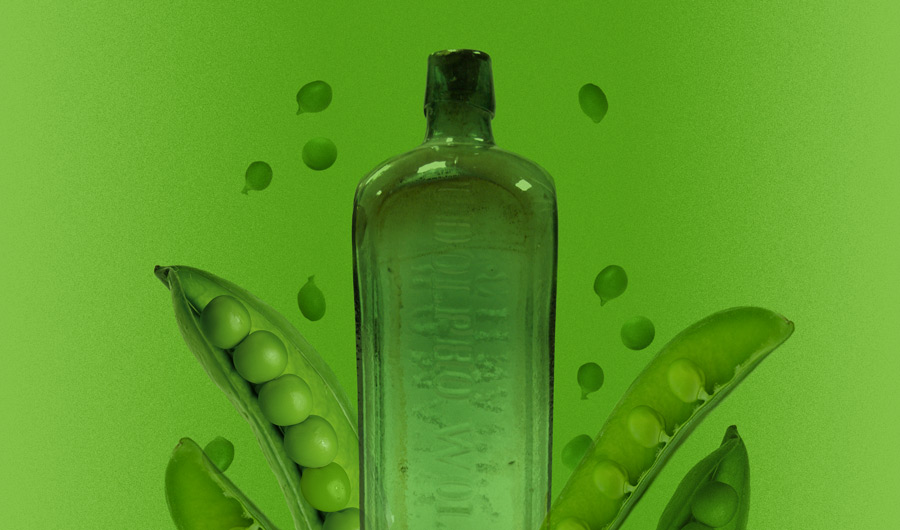The Environmental Benefits of Making Gin from Peas

Photo Collage by Abigail Malate, with images from Auckland Museum (CC BY 4.0) and Pixabay (1,2,3)
(Inside Science) -- A cold gin and tonic on a hot afternoon can really hit the spot, and now researchers in the U.K. have found a way to make that refreshing cocktail more environmentally friendly -- by making the gin out of peas.
Gin is made by taking a neutral base spirit -- usually made from mashed wheat grain -- and redistilling it in the presence of juniper and other plants and berries to give it that distinctive botanical flavor. But in theory you can make that base spirit from anything, said Kirsty Black, master distiller at Arbikie Distillery in Scotland.
“The base spirit can be made from any agricultural raw material but, as it is distilled to a very high alcohol level and purity, the raw material shouldn’t greatly impact the final taste of the gin once it has been flavored with botanicals,” she said.
So Black teamed up with botanists and environmental scientists to test whether using dried and milled peas instead of wheat for the base spirit could be a more sustainable option. Legumes are generally more environmentally friendly crops because their ability to fix nitrogen from the atmosphere reduces the need for the synthetic nitrogen fertilizers that are responsible for a lot of agricultural pollution. That includes the ammonia emissions and runoff that can cause algal blooms in rivers and lakes, said David Styles, who studies product life cycles and carbon footprinting at Bangor University in Wales and was one of the researchers who collaborated with Black. Wheat, for example, requires about 150 kilograms of nitrogen fertilizer per hectare, while peas need none.
Styles conducted a life cycle analysis of the pea gin compared with traditional wheat-based gin, and found that one liter of gin made from peas had a smaller environmental impact in almost every category, including a 12% reduction in the contribution to global warming, 15% less resource depletion, and 68% less nitrogen air pollution -- though it did require more than twice as much land to grow the peas because of lower yields.
But even bigger environmental gains could come after the peas are fermented. The leftover waste products contain twice as much protein as those from wheat. This can be turned into animal feed, which could reduce the need to import soybeans from South America into the U.K.
“That’s where we started to see real benefits,” said Styles. “If you can replace soy imports it provides big credits.”
Styles calculated that each liter of pea gin could actually avoid the equivalent impacts of 2.2 kilograms of carbon dioxide when the reduced soybean imports are taken into account, by reducing deforestation and the emissions associated with cultivating, processing and transporting the soybeans. Using alcohol coproducts for animal feed is already a well-established process, said Styles, though it may be tricky for smaller distilleries and breweries to do on a large scale.
Pea-based gin isn’t going to save the planet by itself, but this study is part of a larger, pan-European project looking at ways to increase the use of peas and other legumes to reduce the environmental footprint of agriculture on the continent. Other projects include using chickpeas instead of durum wheat to make a more nutritious pasta, and legume-based meat substitutes including a version of IKEA’s iconic meatballs made from pea protein.
The pea gin is not yet available to consumers, said Black, though Arbikie is thinking about releasing it in the near future. While the environmental numbers stack up, Black is now looking into how the relative costs of growing and production compare, to determine if pea-based gin would make a viable commercial product.

